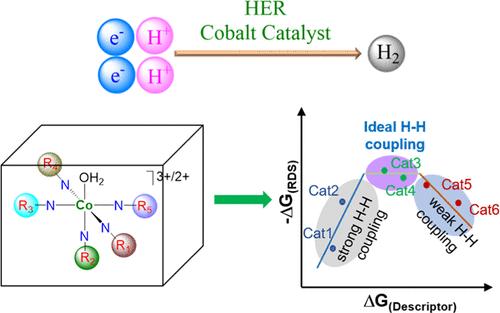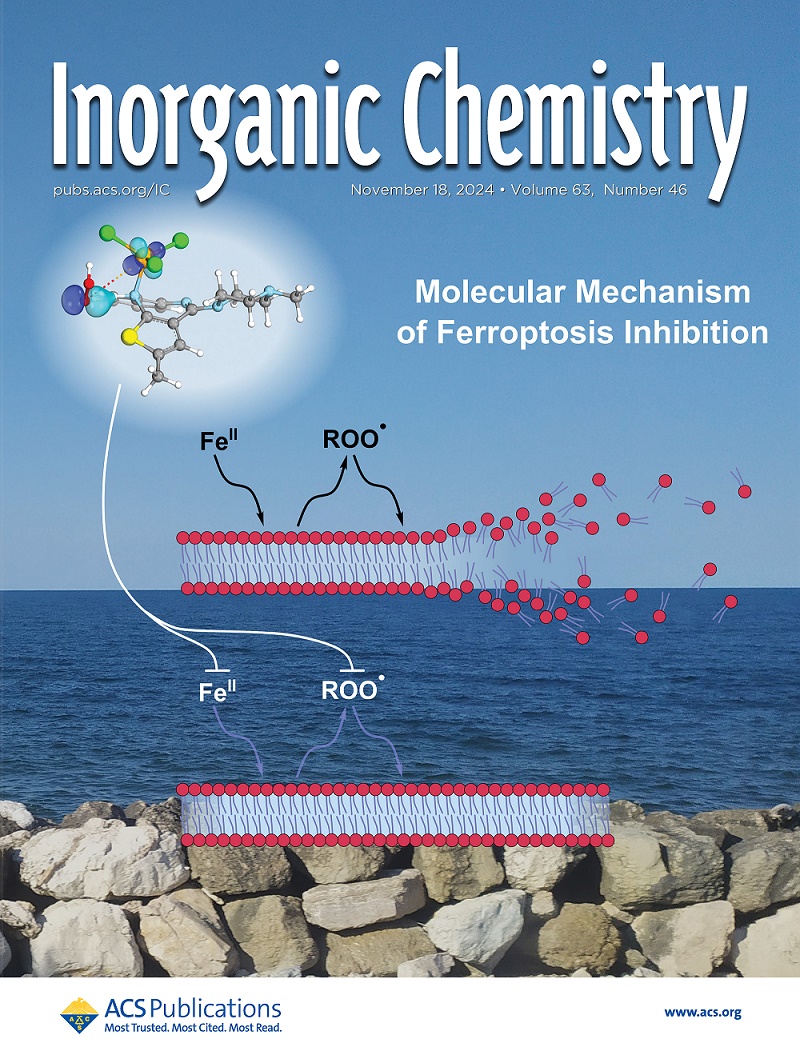Harnessing the Cobalt-Catalyzed Hydrogen Evolution Reaction through a Data-Driven Approach
IF 4.3
2区 化学
Q1 CHEMISTRY, INORGANIC & NUCLEAR
引用次数: 0
Abstract
The design of cobalt complexes for the hydrogen evolution reaction (HER) has garnered significant attention over the past few decades. To address the limitations of the traditional trial-and-error method, we introduced the strategy of a simplified mechanism-based approach with data-driven practice (SMADP) in this study. Our results indicate that the polypyridyl cobalt complexes of the DPA-Bpy family (DPA-Bpy = N,N-bis(2-pyridinylmethyl)-2,2′-bipyridine-6-methanamine) generally follow the electron transfer (E)–chemical proton transfer (C)–electron transfer (E)–chemical proton transfer (C) pathway in HER. However, the involvement of proton-coupled electron transfer (PCET) in the formation of the [CoII(L)–H]+ intermediate has been observed in the PY5Me2 family (PY5Me2 = 2,6-bis(1,1-di(pyridin-2-yl)ethyl)pyridine). Furthermore, the hydricity of the [CoII(L)–H]+ intermediate (ΔGH–) and the CoIII–H/CoII–H reduction potential (ERed°) are found to be the active descriptors in the cobalt-catalyzed HER. Excellent two-parameter regression models (ΔGH– and ERed°) for the formation of the H2 molecule have been obtained (R2 = 0.9429 for the DPA-Bpy family and R2 = 0.9854 for the PY5Me2 family). Our results demonstrate that the SMADP strategy is a groundbreaking method for delineating active descriptors in the cobalt-catalyzed HER. This data-driven approach could also accelerate the design of novel polypyridyl cobalt complexes for enhanced HER.

求助全文
约1分钟内获得全文
求助全文
来源期刊

Inorganic Chemistry
化学-无机化学与核化学
CiteScore
7.60
自引率
13.00%
发文量
1960
审稿时长
1.9 months
期刊介绍:
Inorganic Chemistry publishes fundamental studies in all phases of inorganic chemistry. Coverage includes experimental and theoretical reports on quantitative studies of structure and thermodynamics, kinetics, mechanisms of inorganic reactions, bioinorganic chemistry, and relevant aspects of organometallic chemistry, solid-state phenomena, and chemical bonding theory. Emphasis is placed on the synthesis, structure, thermodynamics, reactivity, spectroscopy, and bonding properties of significant new and known compounds.
 求助内容:
求助内容: 应助结果提醒方式:
应助结果提醒方式:


